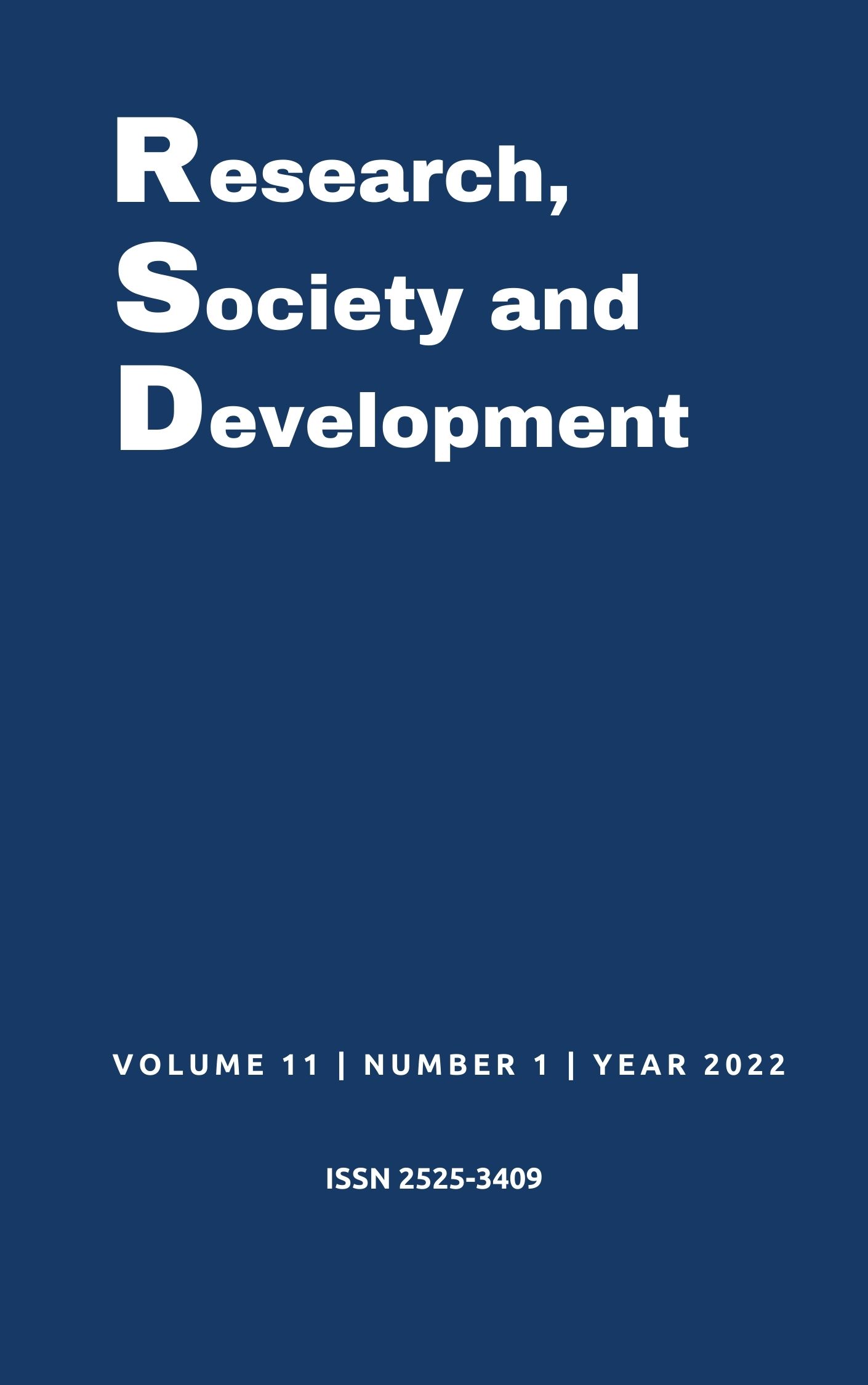Acoustic analysis of swallowing sounds with the use of Sonar Doppler in premature babies during food transition
DOI:
https://doi.org/10.33448/rsd-v11i1.25262Keywords:
Premature, Breastfeeding, Doppler effect, Feeding behavior.Abstract
Objective: To define the acoustic parameters and the feasibility of using swallowing acoustic analysis as an auxiliary method for the transition from nasogastric or orogastric tube feeding to oral breastfeeding. Methodology: A cross-sectional study, which consisted of the following steps: 1. Data collection: Thirty-two newborns participated in this study (16 preterm and 16 full-term); 2. Clinical speech-language pathology evaluation: Clinical data were collected using Sonar Doppler used to assess the readiness of preterm infants to start oral feeding and swallowing sounds. Swallowing sounds were captured during breastfeeding and analyzed according to the frequency, intensity, and time of swallowing, as well as the pause time between swallows and the number of swallows. Results: The control and study groups presented significant differences in the mean wave time and swallowing per minute variables. Conclusion: Sonar Doppler, as an instrument used to capture sounds, is a viable auxiliary resource to evaluate the transition from nasogastric or orogastric tube to oral breastfeeding.
References
Anéas, G. C. G, & Dantas, R. O. A videofluoroscopia da deglutição na investigação da disfagia oral e orofaríngea. GE J Port Gastrenterol. 2014;21(1):21-5.
Castilho, K. R. S., Cavalcante-Leão, B., Figueiredo, A. C. G. de., Ravazzi, G. M. C., Zeigelboim, B. S., Hummig, W., Santos, R. S., & Stechman-Neto, J. (2021). Evaluation of swallowing pattern sound in patients with temporomandibular disorder. Research, Society and Development, 10(14), e403101421835. https://doi.org/10.33448/rsd-v10i14.21835
Enz, V. C. Q., Vaz, A. R. C., Nunes, M. C. A., Rosa, M. O., Nunes, J. A., Marques, J. M., & Santos, R. S. Accuracy of Acoustic Evaluation of Swallowing as a Diagnostic Method of Dysphagia in Individuals Affected by Stroke: Preliminary Analysis. Dysphagia (2021). https://doi.org/10.1007/s00455-021-10358-5
Esteves, T. M. B., Daumas, R. P., Oliveira, M. I. C., Andrade, C. A. F., & Leite, I. C. Amamentação na primeira hora de vida. Rev Saúde Pública. 2014;48(4): 697-708.
Fujinaga, C. I., Moraes, S. A., Zamberlan-Amorim, N. E., Castral, T. C., Silva, A. A., & Scochi, C. G. S. Validação clínica do instrumento de avaliação da prontidão do prematuro para início da alimentação oral. Rev. Latino-Am. Enfermagem. 2013;21(especial):[06 telas].
Hawdon, J. M., Beauregard, N., Slattery, J., & Kennedy, G. Identification of neonates at risk of developing feeding problems in infancy. Dev Med Child Neurol. 2000;42(4):235-9.
Klock, P. E., & Alacoque, L. E. Caring for newborns in a NICU: dealing with the fragility of living/surviving in the light of complexity. Rev Esc Enferm USP. 2012;46(1):43-9.
Lagos, H. N. C., Santos, R. S., Abdulmassih, E. M. S., Gallines, L. F., & Langone, M. Characterization of swallowing sounds with the use of sonar doppler in full-term and preterm newborns. Int Arch Otorhinolaryngol. 2013;17(4):383-6.
Lima, A. H., Côrtes, M. G., Bouzada, M. C., & Friche, A. A. Preterm newborn readiness for oral feeding: systematic review and meta-analysis. CoDAS. 2015;27(1): 101-7.
Marewood, A., Brooks, D., Bauchner, H., MacAuley, L., & Mehta. S, D. Maternal birthplace and breastfeeding initiation among term and preterm infants: a statewide assessment for Massachusetts. Pediatrics. 2006;118(4):e1048-54, 2006. DOI:10.1542/peds.2005-2637.
Medeiros, A. M. C., Oliveira, A. R. M., Fernandes, A. M., Guardachoni, G. A. S., Aquino, J. P. S. P., Rubinick, M. L., Zveibil, N. M., & Gabriel, T. C. F. Caracterização da técnica de transição da alimentação por sonda enteral para seio materno em recém-nascidos prematuros. Soc Bras Fonoaudiol. 2011;23(1):57-65.
Melo, A. M. Avaliação da mamada em recém-nascidos prematuros [Dissertação]. Recife (PE): Universidade Federal de Pernambuco; 2008.
Sanches, M. T. C. Dificuldades iniciais na amamentação: enfoque fonoaudiológico [Dissertação]. São Paulo (SP): Faculdade de Saúde Pública da Universidade de São Paulo; 2000.
Santos, R. S., & Macedo Filho, E. D. Sonar Doppler como instrumento de avaliação da deglutição. Arq. Int. Otorrinolaringol. 2006;10(3):182-91.
Scochi, C. G. S., Gauy, J., Fujinaga, C. I., Fonseca, L. M. M., & Zamberlan, N. E. Transição alimentar por via oral em prematuros de um Hospital Amigo da Criança. Acta Paul Enferm. 2010;23(4):540-5.
Silva, C. S. Avaliação da coordenação sucção/deglutição/respiração através da ausculta cervical digital em recém-nascidos pré-termo e a termo [dissertação]. Porto Alegre (RS): Universidade Federal do Rio Grande do Sul; 2013.
Silva, R. Ν. M. Fatores que interferem na sucção/deglutição/respiração do prematuro. In: Lopes, J. M. A., & Lopes, S. Μ. B. (orgs). Follow-up do recém-nascido de alto risco. Rio de Janeiro: Medsi; 1999. p. 275-300.
Takahashi, K., Groher, M., & Michi, K. Methodology for detectiong swallowing sounds. Dysphagia. 1994;9(1):54-62.
Vargas, C. L., Berwig, L. C., Steidl, E. M. S., Prade, L. S., Bolzan, G., Keske-Soares, M., & Weinmann, A. R. M. Premature: growth and its relation to oral skills. CoDAS. 2015;27(4):378-83.
Yamamoto, R. C. C., Keske-Soares, M., & Weinmann, A. R. M. Sucção nutritiva de recém-nascidos pré-termo. Rev Soc Bras Fonoaudiol. 2009;14(1):98-105.
Downloads
Published
Issue
Section
License
Copyright (c) 2022 Talita Todeschini Vieira; Ana Clara Gonçalves de Figueiredo; Raquel Guidotti Lemos; Karina de Fátima Portela de Oliveira Pereira; Bianca Simone Zeigelboim; José Stechman Neto; Rosane Sampaio Santos

This work is licensed under a Creative Commons Attribution 4.0 International License.
Authors who publish with this journal agree to the following terms:
1) Authors retain copyright and grant the journal right of first publication with the work simultaneously licensed under a Creative Commons Attribution License that allows others to share the work with an acknowledgement of the work's authorship and initial publication in this journal.
2) Authors are able to enter into separate, additional contractual arrangements for the non-exclusive distribution of the journal's published version of the work (e.g., post it to an institutional repository or publish it in a book), with an acknowledgement of its initial publication in this journal.
3) Authors are permitted and encouraged to post their work online (e.g., in institutional repositories or on their website) prior to and during the submission process, as it can lead to productive exchanges, as well as earlier and greater citation of published work.


